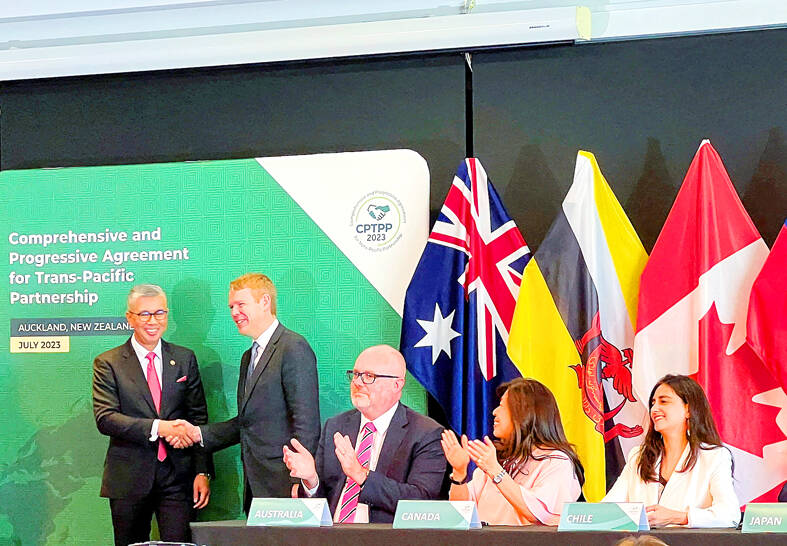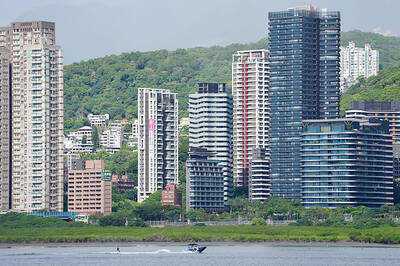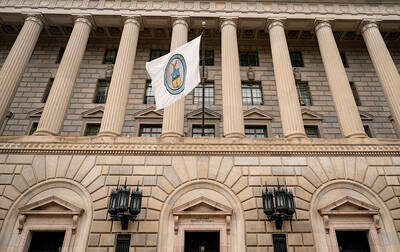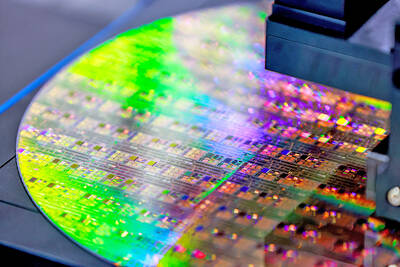The UK officially yesterday became the 12th member of a trans-Pacific trade pact which includes Japan, Australia and Canada, as it seeks to deepen ties in the region and build its global trade links after leaving the EU.
The UK last year announced it would join the Comprehensive and Progressive Agreement for Trans-Pacific Partnership (CPTPP) in its biggest trade deal since Brexit.
The accession means the UK would be able to apply CPTPP trade rules and lower tariffs with eight of the 11 existing members from yesterday — Brunei, Chile, Japan, Malaysia, New Zealand, Peru, Singapore and Vietnam.

Photo: REUTERS
The agreement enters into force with Australia on Tuesday next week, and would apply with the final two members — Canada and Mexico — 60 days after they ratify it.
The pact represents the UK’s first free-trade deals with Malaysia and Brunei, but while it had agreements with the other countries, CPTPP provisions go further, especially in giving companies choices on how to use “rules of origin” provisions.
The CPTPP does not have a single market for goods or services, and so regulatory harmonization is not required, unlike the EU, whose bloc the UK left at the end of 2020.
The UK estimates the pact might be worth £2 billion (US$2.5 billion) a year in the long run — less than 0.1 percent of GDP.
However, in a sign of the strategic, rather than purely economic, implications of the pact, the UK could now influence whether applicants China and Taiwan would be able to join the group.
The free-trade agreement has its roots in the US-backed Trans-Pacific Partnership, developed in part to counter China’s growing economic dominance.
The US pulled out in 2017 under then-president Donald Trump and the pact was reborn as the CPTPP.
Costa Rica is the next applicant country to go through the process of joining, while Indonesia also aims to do so.

Taiwan’s rapidly aging population is fueling a sharp increase in homes occupied solely by elderly people, a trend that is reshaping the nation’s housing market and social fabric, real-estate brokers said yesterday. About 850,000 residences were occupied by elderly people in the first quarter, including 655,000 that housed only one resident, the Ministry of the Interior said. The figures have nearly doubled from a decade earlier, Great Home Realty Co (大家房屋) said, as people aged 65 and older now make up 20.8 percent of the population. “The so-called silver tsunami represents more than just a demographic shift — it could fundamentally redefine the

The US government on Wednesday sanctioned more than two dozen companies in China, Turkey and the United Arab Emirates, including offshoots of a US chip firm, accusing the businesses of providing illicit support to Iran’s military or proxies. The US Department of Commerce included two subsidiaries of US-based chip distributor Arrow Electronics Inc (艾睿電子) on its so-called entity list published on the federal register for facilitating purchases by Iran’s proxies of US tech. Arrow spokesman John Hourigan said that the subsidiaries have been operating in full compliance with US export control regulations and his company is discussing with the US Bureau of

Taiwan’s foreign exchange reserves hit a record high at the end of last month, surpassing the US$600 billion mark for the first time, the central bank said yesterday. Last month, the country’s foreign exchange reserves rose US$5.51 billion from a month earlier to reach US$602.94 billion due to an increase in returns from the central bank’s portfolio management, the movement of other foreign currencies in the portfolio against the US dollar and the bank’s efforts to smooth the volatility of the New Taiwan dollar. Department of Foreign Exchange Director-General Eugene Tsai (蔡炯民)said a rate cut cycle launched by the US Federal Reserve

Businesses across the global semiconductor supply chain are bracing themselves for disruptions from an escalating trade war, after China imposed curbs on rare earth mineral exports and the US responded with additional tariffs and restrictions on software sales to the Asian nation. China’s restrictions, the most targeted move yet to limit supplies of rare earth materials, represent the first major attempt by Beijing to exercise long-arm jurisdiction over foreign companies to target the semiconductor industry, threatening to stall the chips powering the artificial intelligence (AI) boom. They prompted US President Donald Trump on Friday to announce that he would impose an additional